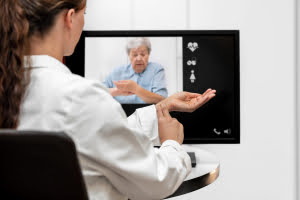Telemedicine ‘Top Area Of Investment’ For UK Healthcare Digital Transformation
 The use of remote access and communications platforms, also known as telemedicine, has been named as one of the three top areas for investment in the UK healthcare sector for a successful digital transformation.
The use of remote access and communications platforms, also known as telemedicine, has been named as one of the three top areas for investment in the UK healthcare sector for a successful digital transformation.
Research from Siemens Financial Services and reported by Pharmi Web, also highlighted new generation (digitalised and/or mobile) diagnostics and smart, digitised hospitals as the other two key areas for investment.
According to the organisation, the highest capital investment is required in the field of telemedicine, where UK healthcare organisations will need to spend £1.4 billion in the next five years.
The development of smart, digitised hospitals is expected to require £1.3 billion in investment in the same period, while new generation diagnostics will require £1.17 billion in expenditure.
When it comes to remote access and communication, the report stressed that this is about more than connecting doctors with patients who may be geographically distant from them. It’s also about linking hardware (or equipment) with systems and clinical professionals. This was described as “the key to value and return on investment from remote medicine”.
In terms of diagnostics, digitalisation is expected to have a significant positive benefit, both through the increased use of mobile diagnostic units that increase the speed of diagnosis and triage, as well as optimising the clinical deployment of devices by linking them digitally.
Healthcare organisations will also need to consider how they can utilise other new technologies that are being developed. Research in the UK recently found that artificial intelligence is now able to provide a diagnosis that’s as accurate as that delivered by healthcare professionals across a range of diseases.
Interested in learning more about cloud-based medical image services? Contact our team of experts today to understand how CIMAR can connect remote systems in disparate locations to improve efficiency, diagnostics and patient care.